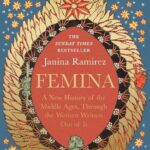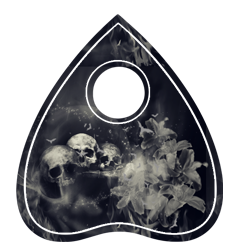
I’m going to preface this review by saying that I am not the target audience for this book. Obviously I agree that writing women back into history is urgent and crucial, but this is a book aimed at a general reader. I have a Masters degree is in medieval studies and specialised in some of the subjects in this book.
As such, I tend to forget that most people don’t know that women had much more agency in the medieval era than they did in the Victorian age, and almost everything we think we know about the past is, annoyingly, still filtered through the lens of the white, straight (passing), colonialist Victorian men who established most of the academic fields that we know today. For instance there’s a lot of reliance on the misogynistic writings of the Church when life was much more complicated. But the Victorians liked structure and order.
If you don’t want to read my very niche thoughts, the take-away is that this is a very readable book which introduces the reader to a past you were told didn’t exist.
One thing that was completely new to me is that some of the early suffragettes (most notably Emily Wilding Davison) were medievalists. The discovery that women hadn’t always led the constrained existence that they did was a revelation and inspiration to them. This makes complete sense – even from my late 20th century vantage point, the discovery that life hasn’t always been a 1950s sitcom pastiche was one of the things that drew me to medieval history.
The first two chapters cover early medieval England – the first migration-age based mainly on an archaeological find, and the second being example of the kingdom of Mercia. This was my area of expertise back in the day, but a lot in these two chapters was new to me and fascinating because so many new discoveries, in archaeology and DNA evidence, have been made since my day. Satisfyingly, a lot of these confirmed things there are snippets of in the texts but which earlier received wisdom said couldn’t possibly be true.
As an aside, one of the ways in which women have been written out of early English history is the later ascendancy of the Kingdom of Wessex and the over-simplification of popular history which posits that kingdom as the obvious precursor to a united England and thus “normal”, when the culture in the Kingdom of Mercia was very different with regard to women’s position in society – they led armies, witnessed charters, and ruled. But there is a paucity of records from Mercia in comparison with Wessex, one thing feeds into another and women are erased.
The third chapter relates to women in the Viking (for want of another simple word) world. Tales of powerful warrior women have persisted through the ages but as Serious Academics we were taught this wasn’t true. Archaeology now tells us this is more likely than not.
In my head, it should be obvious that in a warrior/honour culture, elite men and their war bands spent a lot of time away from home, leaving the elite women in charge, and thus the societies of migration age and early medieval Europe would by default be set up for women to exercise some power, even if only temporarily.
Another area I did a lot of work on at postgrad level was dualist heresies in which women and men were supposedly equal. There has been far less change in this field and thus I could actually have written the chapter on the Cathars.
Hildegard of Bingen is a figure I should know more about, but Central Europe in the High Middle Ages was never my jam (I’m all about the liminality). I find her fascinating, though, and this chapter gave me some ideas for fiction based around her milieu, none of which will probably stand up to any detailed research (this is why we write secondary world fantasy). What I found absolutely fascinating here and kind of knew but not in a thought-out articulated way, is that she didn’t arise out of a vacuum, that there were other women in the area at the time doing similar things. I would have loved a whole book just about that. (No, I do not volunteer to write it). I also didn’t know about the intrepid women who later preserved and disseminated her works. Women get written out of historiography as well as history.
Jadwiga of Poland and the female “kings” in Eastern Europe were completely new to me. I was also reminded reading this book of the Anglo-centric way medieval history was taught to us (I’d like to think isn’t still, but). We were told that the further East in Europe you look, there are no textual sources. Not “there’s texts but they’re in languages none of you can read”, just “there’s no texts”. Even then I knew that was a lie because during my work on dualist heresy I found chronicles on the Bogomils which were translated into English so I didn’t even have to deploy my Latin.
Which leads to my next musing – we are taught to see western European history as a tidy and clean thing with the clear emergence of the nation state, and eastern European medieval history as chaotic. This is probably not objectively true but with my scant knowledge of eastern European history what I do learn appears that way. Of course I have to read about it in English, which probably doesn’t help.
The Book of Margery Kempe is a valuable resource illustrating the possibilities for the life of a late medieval woman. However, to a 19-year-old undergrad with an imperfect understanding of 14th century culture and religious experience, it’s profoundly annoying. At the time the take-home was that Margery was an entrepreneur and had the freedom to travel all over the world on her own (though she annoyed the ever-loving hell out of her tour group). And that was cool but “why do I have to read this?”
What I hadn’t realised is that Margery setting herself up as a religious mystic figure was a part of her being an entrepreneur, this was an accepted later medieval “career path”. This is fascinating and I really wish we’d been taught that at the time.
The book closes with some, again, fascinating snippets illustrating what archaeology and court records can show us about women who otherwise wouldn’t enter the historical records – a black African (possibly a slave?), prostitutes, possible transgender people. I love these, they give me so many ideas for fantasy fiction.
I have now realised that this book might not have taught me a lot of new things, but it has certainly made me think, and connect some dots. I guess this was the book for me after all.
